Despite an initial hard landing, subsequent political oppression and other fluctuations, rock has steadily grown to take root in Korea. Generations of new bands equipped with talent and individuality have created masterpieces representing the spirit of their era.
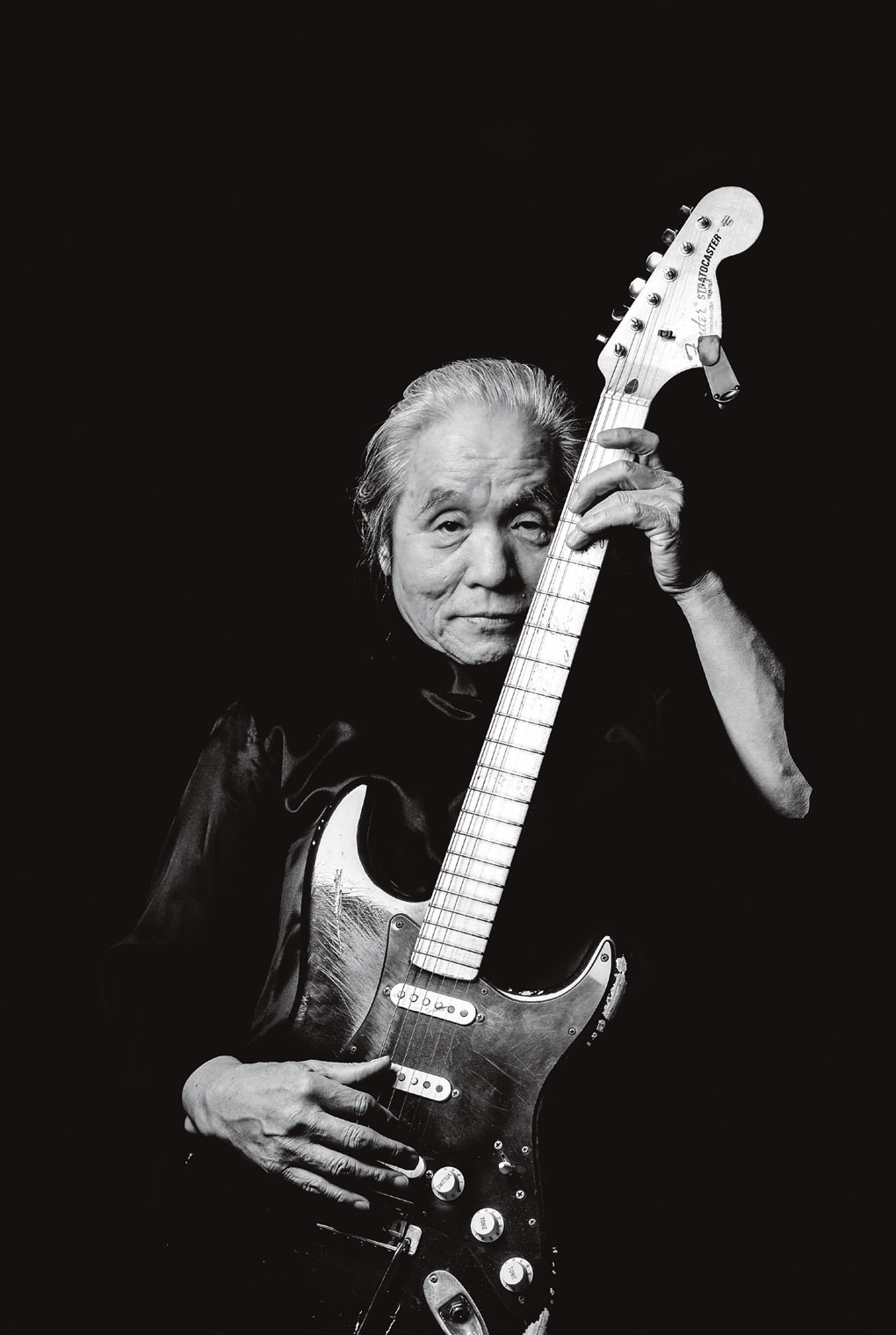
Legendary rock guitarist and singer-songwriter Shin Joong-hyun holds a custommade tribute guitar awarded to him by Fender. The U.S. company has given its guitars to only a few rock luminaries, including Eric Clapton and Jeff Beck. In 2009, Shin became the sixth recipient. © Kwon Hyouk-jae
In 1964, the Beatles appeared on popular American variety program “The Ed Sullivan Show,” marking a defining moment in the British Invasion. Around the same time in Korea, the ambitious first steps of a young rock group were frustrated by the cold response of the public. Shin Joong-hyun had formed a band named the Add4 and released Korea’s first rock album, but the outcome was devastating.
It was a shaky moment in the career of the already well-known musician, who had taught himself to play guitar as a boy and made his debut in 1955 in a club show on the Eighth U.S. Army base. It wasn’t until much later that several tracks on this album, such as “Woman in the Rain” and “A Cup of Coffee,” would gain recognition as epochal songs that had opened up a new era in Korean popular music.
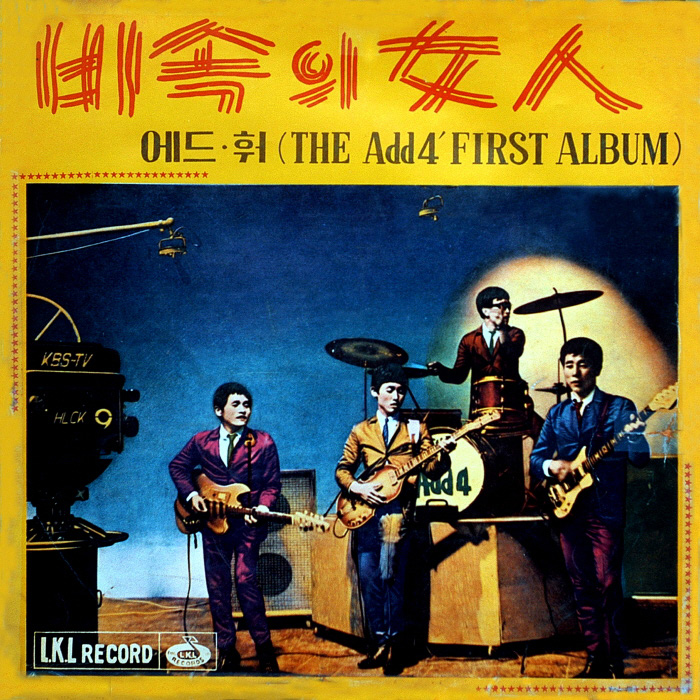
The Add4, Korea’s first rock band formed by Shin Joong-hyun, released its first album “Woman in the Rain” in 1964. The album was a devastating failure.
Koreanized Rock
Back then, rock was played only at live clubs on U.S. Army bases or in music halls in Seoul that catered to a small number of diehard fans. The broadcasting and recording industries didn’t understand rock and lacked the techniques to properly deliver its sounds. Frustrated, Shin made up his mind to leave for Vietnam, accompanying American troops who recognized and enjoyed his music. If he had not decided to produce an album for the Pearl Sisters, a female duo, before departing, and if the album had not been such a success, he might indeed have left the country and the title of “godfather of Korean rock” would have gone to someone else.
In 1967, an unprecedented “vocal group contest” was held at Dongdaemun [East Gate] skating rink, sponsored by “Pops Koreana,” the country’s first pop music magazine. And in 1969, the Playboy Cup National Vocal Group Competition was hosted by Playboy Productions at Seoul Citizens’ Hall (today’s Sejong Center for the Performing Arts). The event, which would be repeated annually until 1971, was an immense success that attracted 17 bands and 40,000 spectators. A variety of contests held in this period provided a foothold for musicians who had honed their skills at the U.S. Army clubs, helping them to reach a wider audience. In the process, rock bands built up the strength they needed for survival.
Shin created a new band named Shin Joong-hyun & The Yup Juns (yupjun meaning “square-holed coins”) in 1974, and the following spring they released their first album, which contained “The Beauty” (Mi-in), a track destined to become a Korean rock classic. Characterized by simple lyrics and short, catchy melodies, the album sold 100,000 copies – a stunning feat in the depressed music market of the time. This momentum carried over to Black Butterfly’s “You Don’t Know” (Dangsin-eun molla), which sold over 50,000 copies, showing the power of Korean rock to make an astounding change in just a decade.
Other projects initiated by Shin demonstrated that Korean groups had skills that were already on par with prominent Western rock bands. These talents were displayed in a cover of Iron Butterfly’s “In-A-Gadda-Da-Vida” by Questions and the psychedelic performances of session band The Men, Shin’s 1970 and 1972 undertakings, respectively. Many other groups who were active around the same time also absorbed and internalized the impact of rock music, which had swept across the world, creating “Koreanized” rock as something distinct from Western rock. In short, the first half of the 1970s was a burgeoning time for the domestic rock music industry.
Dark Days and Rebound
The nascent boom, however, came to an abrupt halt as the authoritarian government of President Park Chung-hee implemented a “popular music purification movement” in 1975. Several artists were incarcerated for smoking marijuana, Shin Joong-hyun among them. Many of his songs were subsequently banned from being publicly performed, and Shin himself was expelled from the music scene. A long period of decline ensued, and out of frustration, more than a few rockers gave up music altogether.
At some point, contests for college musicians, which were broadcast on television, began to draw public attention to new bands playing pleasantly simple and honest music that was unlike anything that had previously been heard from professional musicians. Sanullim (“Mountain Echoes”), which debuted in 1977, was one such band. It was made up of three brothers: Kim Chang-wan (guitar, vocals), Chang-hun (bass guitar, vocals) and Chang-ik (drums). Their music featured sincere lyrics and a psychedelic sound that caused a huge sensation, lifting the darkness that had befallen rock music. Their first album sold 400,000 copies in just 20 days, and for their farewell concert in 1979, fans queued over 500 meters for tickets. Another standout band of the late 1970s was Love and Peace, whose 1978 debut album “It’s Been a While” is an indisputable entry on any list of the 100 greatest Korean popular music albums.
Although the latter half of the 1970s can be seen as a desolate period for rock music overall, it planted the seeds of hope for rockers of the next generation, inspiring them to make the coming decade more promising and productive.
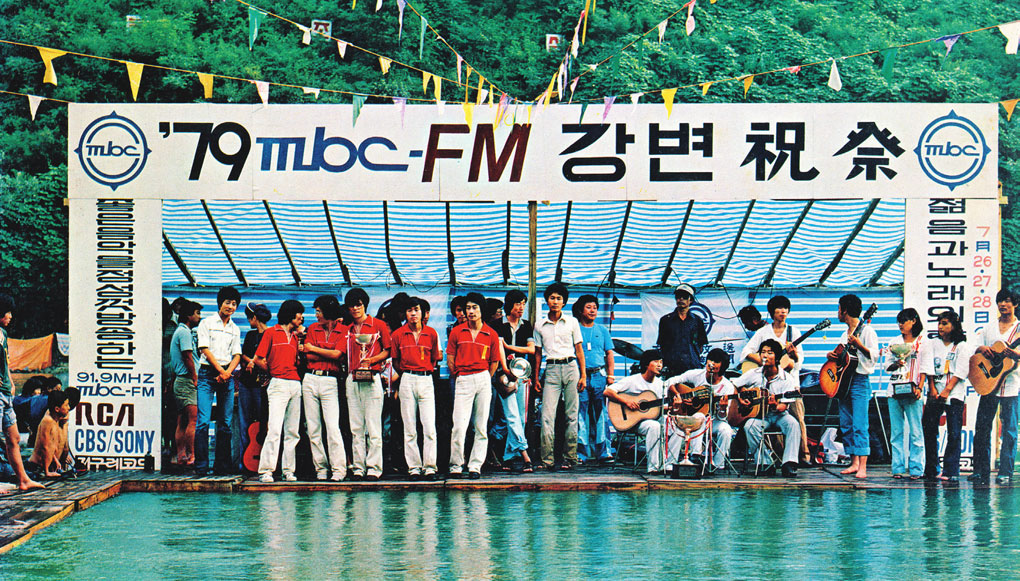
MBC holds its first Riverside Festival in 1979 at Cheongpyeong Amusement Park. The creative song contest for college students served as a gateway to success, producing many star musicians. © Kim Hyeong-chan
Diversity and Maturity
The 1980s saw the rise of various musical genres that were new to Korea, including new wave, funk, fusion, hard rock and heavy metal, and rock musicians responded eagerly. In particular, the band Songgolmae (“Peregrine Falcons”) was able to reach a wider audience with a pop sensibility tweaked to appeal to local tastes. The group contributed to the popularization of rock by performing frequently on television and radio.
Another distinguished band that would grow to become a symbol of 1980s music outside the commercial mainstream was Deulgukhwa (“Wild Chrysanthemums”). They would mostly perform live at small theaters, with an appeal that came in part from their masterful songwriting, which covered rock, blues, pop and folk. But their allure was equally drawn from the sounds they wove with raspy vocals that spoke directly to the heart, classical piano tunes and heavy drum beats that ignited the hearts of young fans to fever pitch, as hot as a Molotov cocktail thrown at the gloom of political oppression. Their debut album “Parade” (1985) spent the longest time at the top of the 100 greatest Korean popular music albums compiled by various media outlets.
Deulgukhwa ruled the era alongside other bands armed with talent and originality, some presenting a mixture of pop and progressive sounds, others creating sophisticated fusion jazz, and still others crooning Korean-style blues. Thanks to these bands, Korean rock of the 1980s grew in diversity and maturity.
In the 1990s, musicians who followed in the footsteps of the previous era rubbed shoulders with others pursuing entirely different styles. Folk rock, which had inherited the political awareness of the 1980s, came to coexist with trendy songs expressing the defiant individualism of the new generation.
The area around Hongik University in Seoul, popularly known as “Hondae,” has long been a culturally specialized space, packed with art institutes, studios, workshops and galleries. The area’s relatively cheap rents made it possible for live clubs to open up, introducing the latest music technology in funk and modern rock to Korea. This development was initiated by musicians who had rejected the production system of big management agencies, opting to lead a more sustainable life making whatever music they liked through independent, small-scale production. In the end, they would bring about a tectonic change that divided Korean popular music into the pre- and post-1990s.
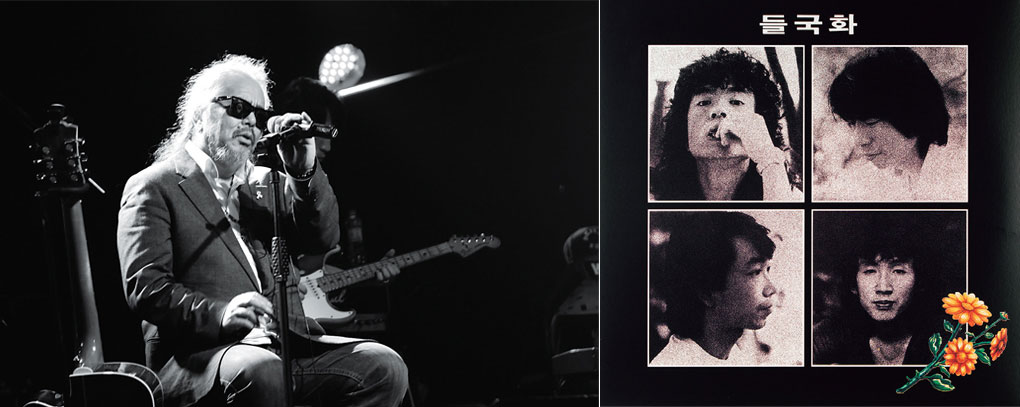
Jeon In-kwon (1954- ) performs at the 2016 Seoul Arirang Festival at Gwanghwamun Square in Seoul. As lead vocalist of the rock band Duelgukhwa (active 1985-1995), Jeon captivated the youth of the 1980s with his rough, shouting voice. © Seoul Arirang Festival
Indie Scene
The spread of internet access also influenced young musicians who thought of themselves as indie. For example, Deli Spice, a ‘90s band who played experimental music based on modern rock, was formed by members who had met in a chatroom on Hitel, an online communication platform. The track “Chau Chau” from their first album and “Run the Horse” by the punk rock band Crying Nut spurred the birth and revolt of Korean indie music as led by the newly formed music community in the Hongdae area.
Later, diverse subgenres like garage, modern rock and hardcore won over music fans of the 2000s, manifesting the initiative of rock bands in the indie scene. A number of these acts rose to stardom, with the immense popularity of Black Skirts, Broccoli, You Too?, and Kiha & The Faces marking the peak of the Korean indie scene. Other bands that appeared toward the end of the 2010s, such as Jannabi and Hyukoh, started to straddle the border between indie and the mainstream, making the most of Korea’s improved production systems. Today, the arena is wide open – it’s no longer surprising for Korean bands to collaborate with Southeast Asian acts or make forays into Western countries. Although it’s regrettable that rock bands are no longer at the center of popular music, Korean rock is still evolving, and the history of the 2020s is yet to be written.
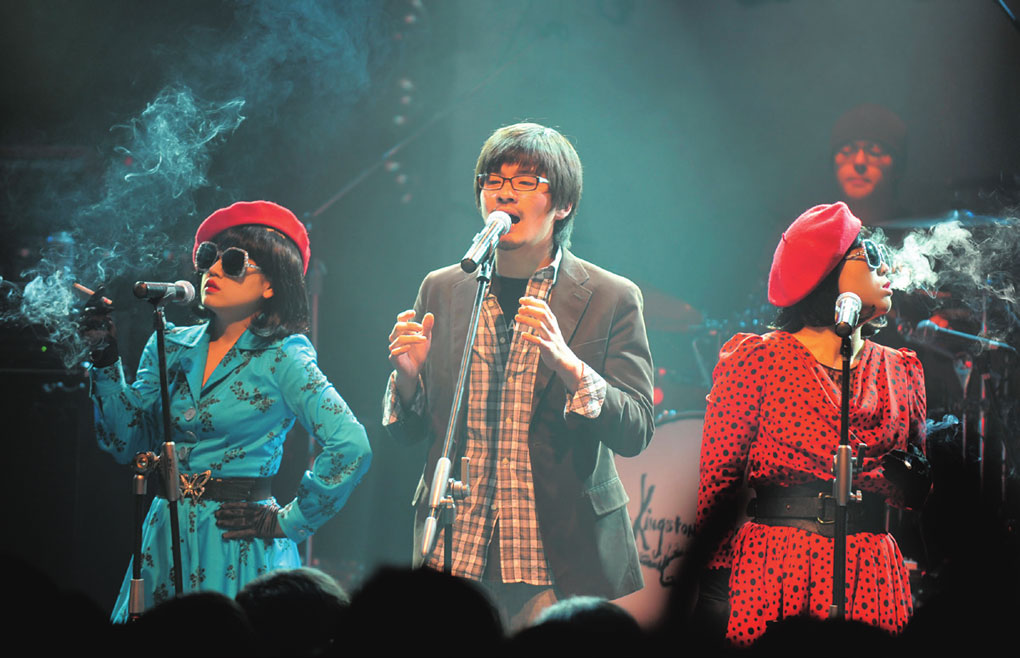
The indie rock band Kiha & The Faces (active 2008-2018) perform in 2009 at KT&G Sangsang Madang in the Hongdae district. With their radically innovative lyrics and melodies and chant-like singing style, the band emerged as an icon of Korea’s second-generation indie music. The Mimi Sisters, the band’s chorus for several years, became an independent duo in 2011. © Newsbank
Although it’s regrettable that rock bands are no longer at the center of popular music, Korean rock is still evolving, and the history of the 2020s is yet to be written.
Roots of African-American Music in Korea
Kim Zak-ka Music Critic; Selection Committee Member, Korean Music Awards
Once a subculture for African-American youths from Compton, California or the Bronx, New York City, hip hop produced a legion of stars in the 1980s and 1990s, dethroning R&B to become the dominant genre of black American music. It also had an immense impact on Korean youths at the time, and still wields huge power over Korea’s pop music scene.
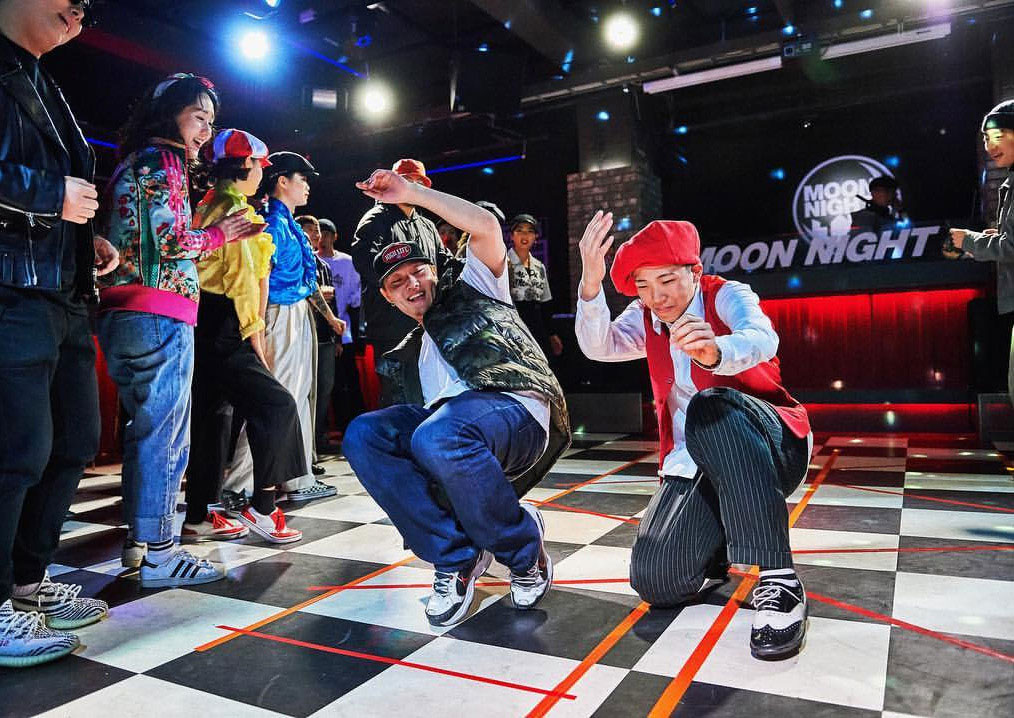
A dance battle is underway at Moon Night, a nightclub in Itaewon, Seoul. Known as the cradle of dance music in Korea, the nightclub produced many first-generation dance music acts of the 1990s. © Gramho
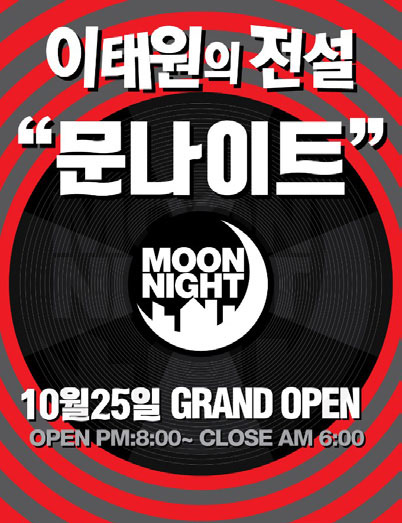
Moon Night’s logo, dubbing it “Legend of Itaewon.”
Hip Hop
In the late 1980s, when rock music was a prominent element of Korean youth culture, a community of fans of African-American music began to form in a corner of the country. The breeding ground was Moon Night, a nightclub in Seoul’s Itaewon neighborhood – a cultural hot spot where the latest Western dance music was all the rage. Formerly, Moon Night’s clientele had been U.S. soldiers stationed in Korea, but a few years earlier, its doors had been opened to locals as well. The young Korean dancers who frequented the club were exposed to authentic black American dance music, such as disco and funk, as well as the latest trends like hip hop and new jack swing.
This is where many of the popular dance music acts who reigned over the airwaves in the 1990s were created. Once passionate clubbers here, Seo Taiji & Boys proved it was possible to rap naturally in the Korean language and enthralled fans with their high-powered dance moves. Thanks to this celebrated trio, dance music swept through the local pop landscape and talent agencies began rounding up for formal training those dancers who had made a name for themselves at Moon Night. The phenomenal success of “Come Back Home” (1995), a song rooted in gangster rap from Seo Taiji & Boys’ fourth album, provided the ground for hip hop to take root in Korea.
Around the same time, Black Loud Exploders (BLEX), a chatroom for fans of black American music on the online communication platform Hitel, served as the cradle for underground hip hop. BLEX members produced mixtapes, recording rap set to beats they had composed themselves, or used free-style rap for their pager ringtones. In addition to writing their own music, they also collected and reviewed relevant information from abroad, thereby helping to enrich the local hip hop culture. Masterplan, one of the live clubs in the Hongdae area, regularly offered a stage to hip hop musicians, which in turn generated greater demand for the music.
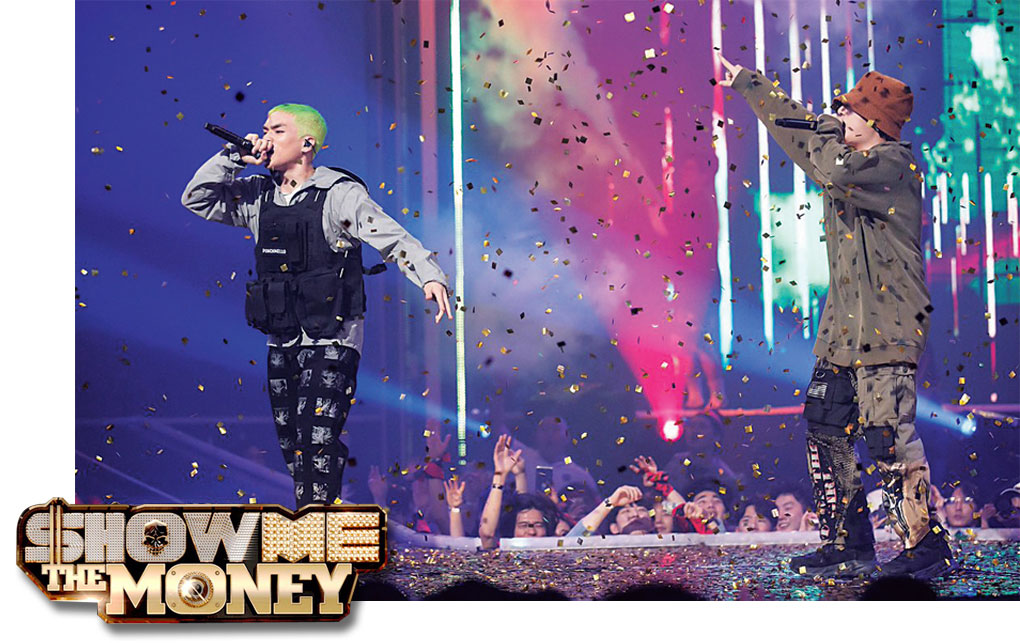
A scene from “Show Me the Money,” a hip hop survival show from the cable music channel Mnet. Since its first season aired in 2012, the show has been held annually on the back of hip hop’s enduring popularity. © Captured from Mnet
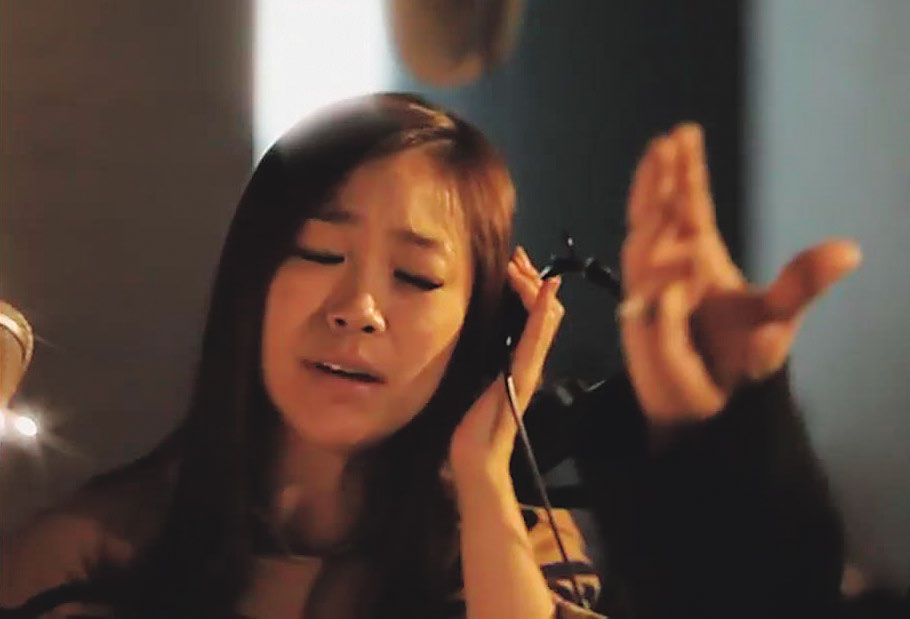
Along with the male trio Solid, Lena Park (1976- ) led the R&B craze that swept the Korean pop music scene of the late 1990s. © Captured from KBS
R&B
While hip hop developed spontaneously in Korea, R&B was imported via Korean Americans. Except for the impressive attempt of homebred Yoo Young-jin, who composed and sang “Your Scent,” R&B vocals with Korean lyrics were delivered mostly by performers who had been raised in the United States. A good example is Solid, a trio of Korean Americans including George Han Kim. “Holding onto the End of the Night” (1995), a single from their second album, was a hit that ushered in the golden age of Korean R&B.
Soon afterwards, another Korean-American vocalist named Lena Park made a successful debut with “P.S. I Love You” (1998), and her popularity placed R&B at the center of the ballad genre. Because there was no such thing as professional pop music training back then, it was hard for native Korean singers to learn the vocal vibrations and other features that were typical of African-American music. Korean Americans who were familiar with R&B vocals, notably through church choirs, could appropriate the original style far more successfully.
In the 2000s, driven by Brown Eyes’ mega hit “Already One Year” and Asoto Union’s “Think About ‘Chu,” songs in African-American styles made up a large share of mainstream popular music. Meanwhile, musicians continuously strived to do more than just imitate foreign styles, weaving Korean sensibilities into R&B to create so-called “mid-tempo ballads,” a megatrend in the pop music scene of the mid-2000s.
Michael Jackson
Korea’s ready acceptance of African-American music owed to still other factors: the rise of composers who placed greater emphasis on beat over melody, and the development of MIDI software facilitating the use of sounds beyond the scope of real instruments.
Along with electronic dance music (EDM), hip hop constitutes a crucial element of today’s K-pop idol music. “Show Me the Money,” a TV audition program that has propelled the hip hop boom since the mid-2010s, elevated rappers to an increasingly significant presence on music charts and at college festivals. This is a radical change from the pre-1990 years, when hip hop was often derided as “coal briquette music.” Even then, however, there was a stunning exception: Michael Jackson.
Michael Jackson had a massive impact on Korea’s would-be pop stars, who would dance the night away wearing out the floors of Moon Night. Those impassioned youths were hugely indebted to their iconic hero, and in this sense, it’s safe to say that Michael Jackson and his music proved to be a watershed in the history of Korean pop music.